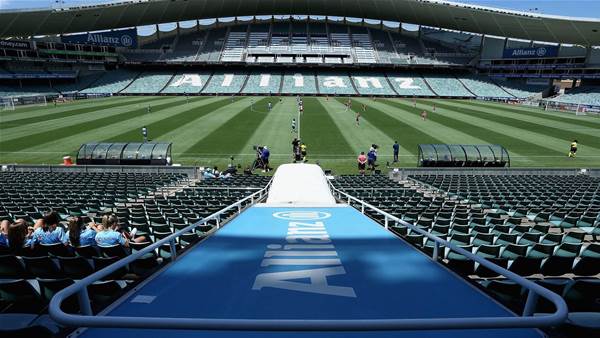General Rules of Torball
When it comes to Torball, understanding the rules is like navigating a complex maze. The intricacies of the game can be both challenging and rewarding. As you step onto the court, the guidelines governing player movements, ball tracking, and scoring may seem overwhelming at first. However, by grasping the fundamental principles, you can unlock the strategic depths of this unique sport. Stay tuned to discover how adherence to the General Rules of Torball can elevate your gameplay and lead your team to victory.
Objective of the Game
In Torball, the objective of the game is for players to score points by throwing a ball into the opposing team's goal while wearing blindfolds. Scoring techniques in Torball involve using a strong, well-aimed throw to outwit the opposing team's defense. By mastering different throwing styles and angles, you can increase your chances of scoring points. Defensive strategies are crucial in Torball to prevent the opposing team from scoring. Effective communication skills and team coordination play a significant role in achieving success in Torball. Since players are blindfolded, clear and concise communication is key to ensuring that everyone is on the same page regarding game plans and strategies. Team coordination is essential for players to move together seamlessly, covering defensive positions and launching coordinated attacks. By honing your scoring techniques, understanding defensive strategies, improving communication skills, and enhancing team coordination, you can excel in the exhilarating game of Torball.
Court Setup
Alright, let's talk about the key points of setting up a torball court. This includes understanding the court dimensions, goalpost locations, and boundary markings. These elements are crucial in creating a fair and competitive playing field for all participants.
Court Dimensions
When setting up the court for a torball game, ensure that the dimensions meet the official standards to maintain fairness and consistency in play. The court dimensions for torball are crucial in ensuring a level playing field for all teams. The court is typically 16 meters long and 7 meters wide, with tactile markings on the floor to guide players. Each team consists of three players who are positioned on the court strategically. Two players are positioned at the wings, and one player is positioned in the center. This setup allows for effective defense and offense strategies during the game. By adhering to the official court dimensions and player positioning, teams can compete on equal footing, enhancing the overall torball experience.
Goalpost Locations
Ensure the goalpost locations on the torball court are positioned accurately to facilitate fair and strategic gameplay. When setting up the court, consider the following:
- Goalpost Positioning: Place the goalposts at each end of the court, ensuring they are equidistant from the centerline to maintain fairness.
- Defensive Strategies: Strategically position players near the goalposts to defend against incoming balls effectively.
- Strategic Placement: Adjust the goalpost locations based on the defensive strategies employed by the team to create a strong defense while allowing for fluid offensive movements.
Boundary Markings
In preparing the torball court, it is essential to accurately mark the boundaries to establish a clear playing area for fair and organized matches. Player positioning and movement are crucial elements affected by the boundary markings. The boundaries not only define the playing area but also guide players in their defensive strategies by providing spatial orientation. Communication among teammates is facilitated by knowing the court's boundaries, enabling effective coordination during gameplay. When players have a clear understanding of the court's limits, they can anticipate the ball's trajectory and adjust their positioning accordingly. By ensuring the boundaries are visibly marked and understood by all players, the game flows smoothly, allowing for strategic moves and coordinated defensive efforts.
Equipment Needed
To participate in torball, players need specific equipment to ensure fair play and safety on the court. Here are three essential items you'll need:
- Torball: A Torball is the ball used in the game, and it's designed to produce sound to help players locate it by hearing. It must meet specific weight and size regulations to ensure consistency during play and fairness for all players.
- Protective Gear: Safety is paramount in torball. Players must wear protective gear such as knee pads and elbow pads to prevent injuries while diving to stop the ball or moving quickly on the court.
- Blindfolds: All players must wear blindfolds to ensure a level playing field. The blindfolds block out all light, making the game solely reliant on sound. This enhances the experience for visually impaired players and creates an equal footing for everyone involved.
Team Composition
Moving on to the team composition in torball, understanding how players are organized is crucial for effective gameplay and coordination on the court. In torball, each team is comprised of three players on the court at a time, with all members playing important roles in achieving success. Let's delve into the key aspects of team composition in torball:
| Player Rotation | Team Communication |
|---|---|
| Players rotate positions after each half to ensure equal participation and adaptation. | Clear and concise communication is vital for coordinating defensive and offensive strategies effectively. |
| Position Roles | Strategy Implementation |
| Each player has a specific position – left wing, center, or right wing – with unique responsibilities. | Implementing strategies such as defending as a unit and attacking with precision enhances team performance. |
Game Duration
When it comes to Torball, understanding the game duration is crucial for strategizing effectively. Points to consider include the timing of matches and the rules for overtime. Knowing these details will help you navigate the game with confidence and precision.
Timing of Matches
During Torball matches, the game duration is typically set at a predetermined time limit to ensure fairness and efficiency in gameplay. Here are key aspects related to the timing of matches:
- Match Scheduling: Coordinating games based on player availability is crucial to ensure all team members can participate.
- Timekeeping: Adhering to strict timekeeping rules helps maintain the flow of the game and ensures matches are conducted smoothly.
- Match Interruptions: In case of interruptions, such as injuries or technical issues, protocols are in place to manage these situations effectively, minimizing disruptions to the overall game experience.
Overtime Rules
To determine the outcome of tied matches, Torball implements specific overtime rules to extend game duration and provide a fair resolution. During overtime, teams can strategize their tactics, make crucial player substitutions, and focus on defensive techniques to prevent the opponent from scoring. This additional playing time allows for intense offensive plays, where teams aim to secure a winning goal while maintaining a strong defense. Coaches often play a pivotal role during overtime, guiding their players on the best course of action to break the tie and emerge victorious. Overtime in Torball adds an exciting dimension to the game, testing the skills and endurance of players while showcasing their ability to adapt to changing circumstances on the court.
Basic Gameplay
Engage in torball by utilizing your senses to track the ball's movements and respond quickly to defend your goal. Torball, a sport designed for individuals with visual impairments, requires a keen sense of awareness and teamwork. Here are some key aspects of basic gameplay:
- Defensive Tactics: Work with your teammates to cover different areas of the goal. Use verbal cues and hand signals to communicate and coordinate defensive strategies effectively.
- Communication Strategies: Clear and concise communication is vital in torball. Develop a system of communication that works for your team, whether it's through verbal commands or tactile signals.
- Shooting Techniques and Body Positioning: When shooting, aim for the gaps in the opponent's defense. Position your body to generate power and accuracy in your throws. Remember, proper body positioning can enhance your shooting skills and overall gameplay.
Scoring System
In torball, understanding the Scoring System is essential for tracking your team's progress and determining the outcome of each match. Scoring in torball is based on precision, teamwork, and strategic gameplay. Let's delve into the key aspects of the Scoring System, including scoring techniques, defensive strategies, goalkeeper responsibilities, and offensive tactics.
Scoring System Overview
To score in torball, teams must work together effectively. Here is a breakdown of the key elements related to scoring:
| Aspect | Description |
|---|---|
| Scoring Techniques | Teams aim to roll the ball past the opposing team's defense into the goal. |
| Defensive Strategies | Teams must defend their goal by listening for the ball and using their bodies to block it. |
| Goalkeeper Responsibilities | The goalkeeper plays a crucial role in stopping incoming shots and initiating counterattacks. |
| Offensive Tactics | Offense involves strategic ball placement, quick passes, and utilizing the element of surprise. |
Understanding these components will help you enhance your team's performance and aim for victory in torball matches.
Fouls and Penalties
When discussing Fouls and Penalties in torball, it is crucial to understand the rules governing player conduct and potential consequences for rule violations.
Key Points to Consider:
- Player Conduct and Consequences
- Players must adhere to the rules of fair play and sportsmanship at all times. Any behavior that goes against these principles, such as intentional physical contact with opponents or using offensive language, can result in penalties.
- Respecting Fair Play and Sportsmanship
- Fair play is the essence of torball, emphasizing respect, integrity, and equality. Sportsmanship involves showing courtesy to opponents, officials, and teammates. Failure to uphold these values can lead to penalties and disciplinary actions.
- Impact of Violations
- Penalties for fouls can range from warnings to temporary suspensions, depending on the severity of the offense. It is essential for players to understand the consequences of their actions and strive to maintain a positive and respectful attitude on the court.
Winning Strategies
To increase your chances of success in torball, incorporating effective strategies into your gameplay is essential. When it comes to winning strategies, a blend of defensive positioning, communication tactics, offensive strategies, and team coordination is crucial. By mastering these elements, you can elevate your performance on the torball court.
Winning Strategies Table:
| Strategies | Description | Example |
|---|---|---|
| Defensive Positioning | Ensuring players cover the goal effectively | Rotating players to block angles |
| Communication Tactics | Clear and concise communication among teammates | Using specific codes for directions |
| Offensive Strategies | Creating scoring opportunities through teamwork | Passing quickly to confuse defense |
| Team Coordination | Synchronizing movements and actions as a unit | Practicing set plays for consistency |
Frequently Asked Questions
Are There Any Specific Rules Regarding Player Positioning on the Court During Gameplay?
During gameplay, player positioning is crucial in Torball. To maintain fairness, there are strict ball contact restrictions. Effective team communication and strategic placement on the court are key to success in this exciting sport.
Can a Player Touch the Ball With Any Part of Their Body, or Are There Restrictions on How They Can Make Contact With the Ball?
When playing Torball, you can touch the ball with different body parts; there are no restrictions on allowed contact. This flexibility offers strategic advantages for players, allowing for diverse gameplay tactics based on player positioning and movement.
How Are Substitutions Handled During a Torball Game?
Ever wondered about the intricate dance of player rotation in torball? Substitution process is crucial, following strict rules to maintain fairness and strategy. Coaches strategize to swap players effectively, keeping the team's momentum strong.
Are There Any Specific Strategies or Tactics That Are Commonly Used in Torball to Gain an Advantage Over the Opposing Team?
When playing Torball, common strategies involve teamwork, communication, and adapting defensive formations. By coordinating with your teammates, you can create a strong defense to block shots and prevent the opposing team from scoring.
Are There Any Restrictions on How Players Can Communicate With Each Other During Gameplay, Such as Using Verbal Cues or Hand Signals?
During gameplay, players can communicate using non-verbal cues like hand signals or gestures to coordinate with the team. Silent signals are crucial for effective teamwork in Torball, ensuring smooth coordination without verbal distractions.






